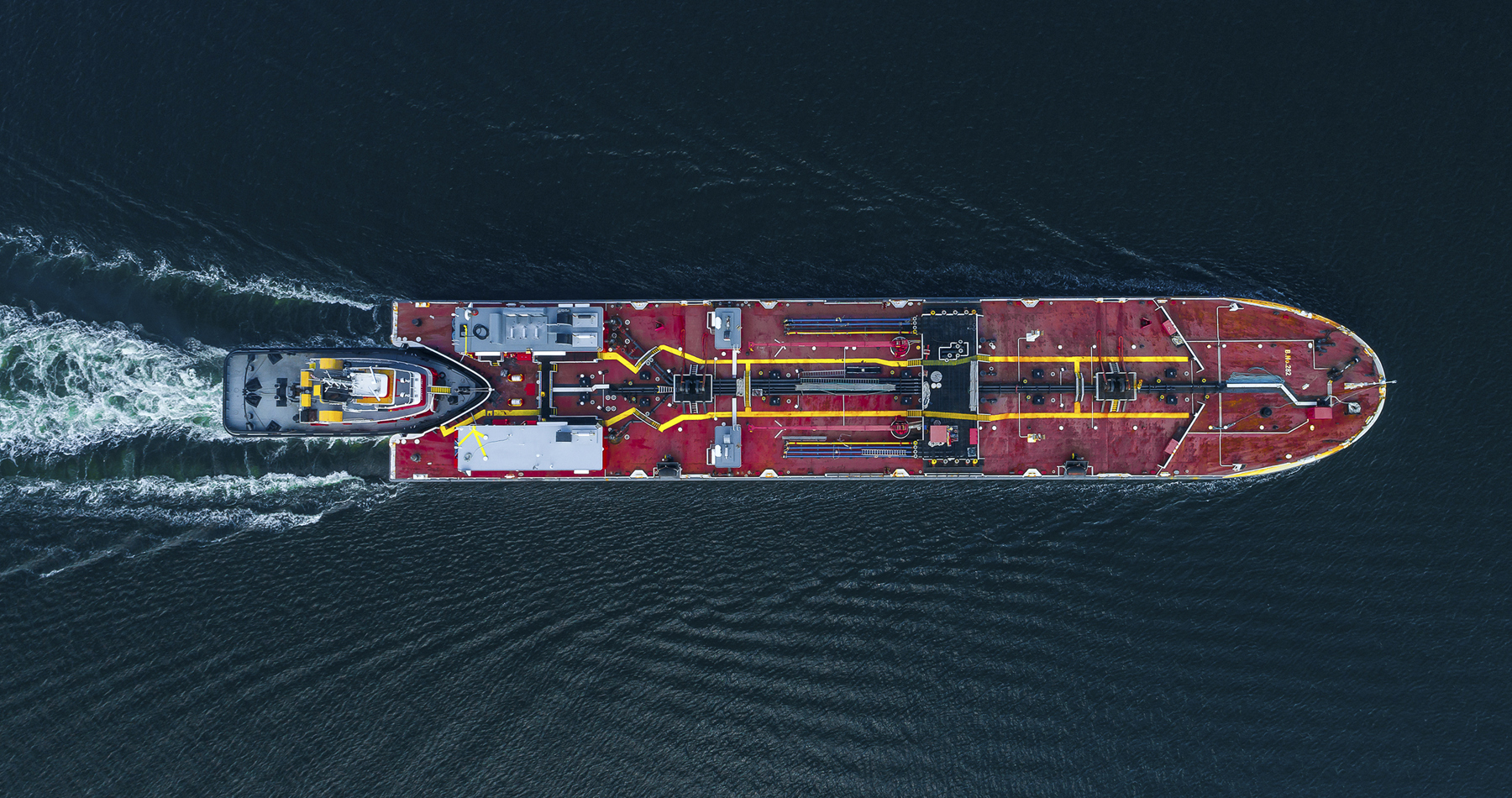
“CO2-transport and -storage possible from 2022”
Ludo van Hijfte
General manager at Fizzy Transition Ventures
Haije Stigter
Technical director at Fizzy Transition Ventures
Groundbreaking collaboration
Ludo and Haije share the same concern about the climate and are motivated by their experience - together with a group of driven and experienced gas specialists - to accelerate the transition to a sustainable world.
Capture CO2 at the source, compress it in a floating transport container, push the container with a boat to an empty offshore gas field and inject the CO2 into the field. In a nutshell, that is the scalable shipping concept that Fizzy Transition Ventures has developed for the transport and storage of CO2. “The basis has always been to keep things simple. By making smart use of existing knowledge, we can make an impact quickly and easily. We think that is important,“ says Ludo van Hijfte.
Fizzy Transition Ventures is currently working on a detailed design and specifications of the transport container, pushboat and mooring system. “Of course we cannot do this alone. Involvement of parties from the entire chain is essential for the success of the concept. That is why we are pleased that we have a strong consortium with partners such as Wagenborg, Niestern Sander, Petrogas, Imodco and Bureau Veritas,” says Haije Stigter.
The collaboration between Stigter, Wagenborg and Niestern Sander is not new. “In my role at Shell, since 2013, I have been closely involved with the development of the Kroonborg. With this first walk-to-work ship we jointly introduced a groundbreaking new ship concept for maintenance of offshore platforms at sea. And this is exactly where my motivation is: looking at how we can do things better, smarter and more efficiently. I am convinced that with this concept we can make a major contribution to achieving the climate objectives on time.”

Global support
The men have noticed that the world has changed over time, partly due to the climate agreement. Van Hijfte: “When we started, there were no concrete plans in the Netherlands for storing CO2, and certainly not in empty gas fields. The CO2 capture and storage projects in Barendrecht and Rotterdam were stopped, CO2 emission prices were low and no one seemed to believe that a conclusive business case could be made. There is now huge political support for combating climate change. This translates into higher prices for CO2 emissions and concrete actions and initiatives at local, European and global level, such as the subsidy we received for developing our concept.”
We now know for sure that the concept is safe, realistic and practicable.
Immediate results possible
To date, only a handful of CO2 storage projects have been realized, partly due to a lack of available storage locations. The gentlemen are convinced that empty offshore oil and gas fields are essential to drastically reduce greenhouse gas emissions in the short term. “The majority of the available worldwide storage capacity is unused, while CO2 emissions continue unabated. At the same time, dismantling offshore locations ensures that a considerable number of suitable CO2 storage locations are permanently closed off; capital destruction if you ask us”, says Stigter.
The latest UN climate report concludes that unless we lower global energy demand below its current level (despite an increase in the global population by 2 billion people in 2050), the maximum 1.5-degree warming target can only be achieved if we implement CO2 storage on a global scale. “By transporting CO2 directly from the source to an empty offshore field at sea, we simplify the logistics of CO2 transport, making it modular and scalable. By utilizing more of the available storage capacity in empty oil and gas fields at sea, we can quickly start the process of CO2 storage. Slow innovation in the industry to reduce CO2 emissions is no longer an excuse; we offer the possibility of immediately reducing emissions, while the transition to more sustainable production methods is being developed,“ concludes Van Hijfte.



